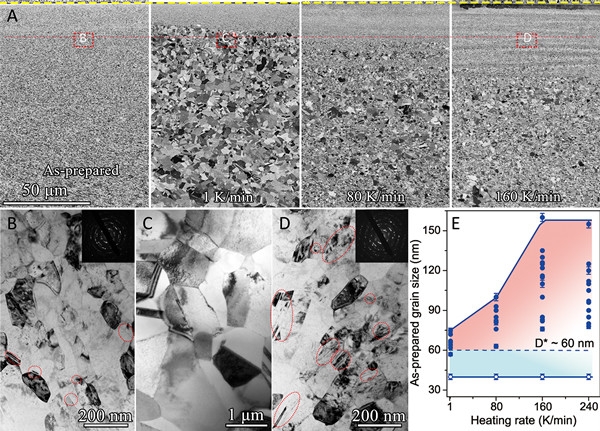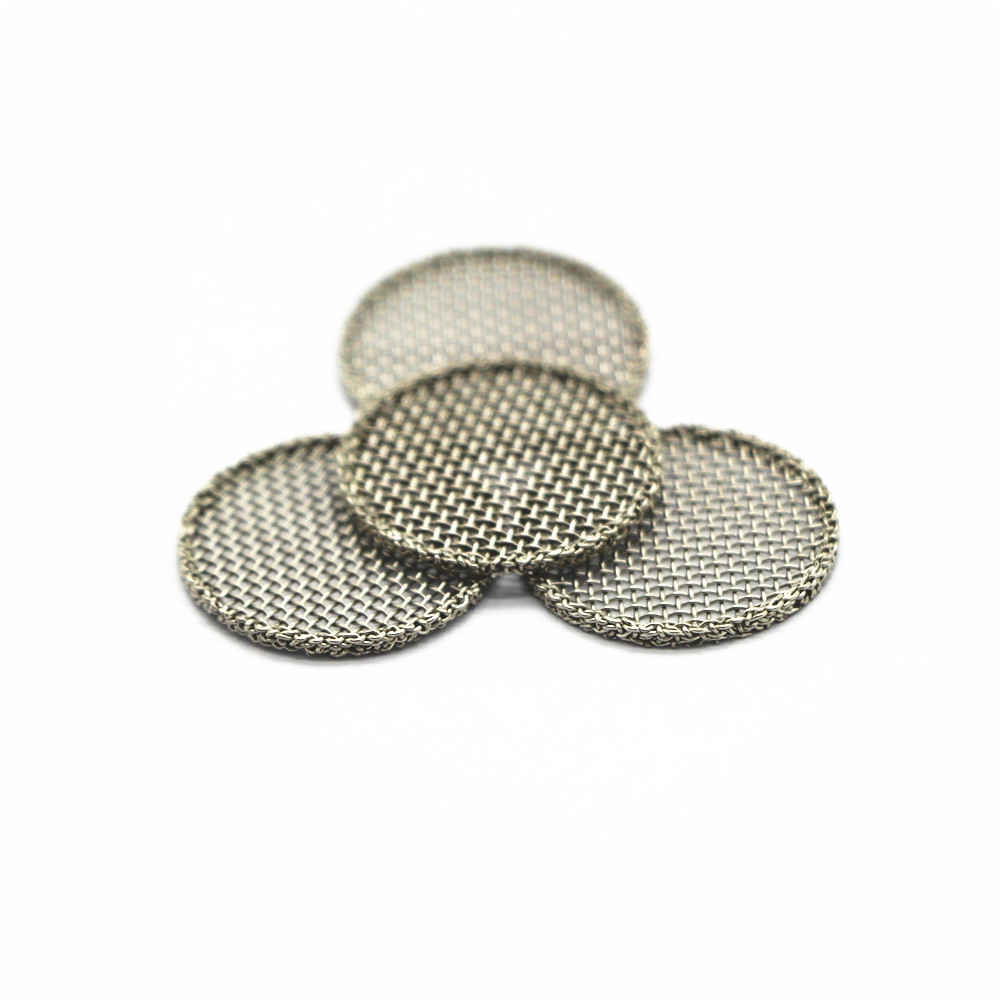[ Instrument R & D of Instrument Network ] Nano metal has poor stability due to the introduction of a large number of grain boundaries. Generally speaking, the growth temperature of nanocrystalline grains is much lower than the recrystallization temperature of coarse crystals, and some nanocrystalline pure metals grow up even at room temperature. Poor stability has become a major bottleneck restricting the preparation and application of nanometals. The traditional method of stabilizing nanocrystals is mainly to reduce the interfacial energy or drag the grain boundary migration through alloying.

The Nanometal Scientist Studio of the Shenyang National Research Center for Materials Science, Institute of Metal Research, Chinese Academy of Sciences has conducted systematic research on the stability of nanometals in recent years. In 2018, the studio researchers discovered the abnormal grain size effect of thermal stability of nanocrystals in nanocrystalline pure copper and pure aluminum prepared by plastic deformation, that is, smaller than the critical size. As the grain size decreases, the material deforms The mechanism changes from dominated by full dislocations to dominated by incomplete dislocations, the grain boundary relaxation mechanism starts, and the stability of nanocrystals does not decrease but rises (Science, 360, 2018). Subsequently, they found that despite the different internal mechanism of grain boundary migration under heating, this abnormal grain size effect also exists in the mechanical stability of nanocrystals under stress (Phys Rev Lett, 122, 2019). This research was selected as the highlight work by Science under the title of A size limit for softening (Science, 364, 2019).
However, the grain size of pure metals prepared by severe plastic deformation methods (such as equal channel extrusion, lap rolling, etc.) is usually in the submicron scale, and it is difficult to initiate the grain boundary relaxation mechanism during processing. For example, the grain size of pure copper prepared by severe plastic deformation is mostly in the range of 100-200 nm, and its stability is poor. Its grain growth temperature is much lower than that of coarse grains. A recent study by studio Li Xiuyan and others found that rapid temperature rise can introduce annealing twins in nanocrystalline copper, thereby achieving "thermal relaxation" of the nanocrystalline grain boundaries and improving the thermal stability of the nanocrystals. One of the difficulties faced by the introduction of annealing twins in nanocrystalline copper is: unstable nanocrystals, whose grain growth stability is only 393 K, which is much lower than the temperature generated by annealing twins (~ 523 K), heating No twins were produced during the process, and the grains had grown up. Based on the Kissinger effect, the researchers proposed that increasing the heating rate can increase the grain growth temperature without affecting the twinning growth temperature. Therefore, rapid temperature rise not only avoids grain growth, but also produces growth twins. The pure Cu with a grain size of about 80 nm was rapidly heated to 523 K at a rate of 160 K / min for 15 minutes and then cooled. The grain size of the material did not change significantly, but the number of twins increased significantly. Like deformed twins, these grown twins can also relax the grain boundaries and enhance the thermal stability of the nanocrystals. After heat treatment, the apparent growth temperature of the nanocrystals increased from below 393 K to above 773 K.
The thermal relaxation method of rapid temperature increase to improve the stability of nanocrystals can be used to improve the stability of submicron and nanocrystals obtained by general severe plastic deformation, and is of great significance for the development of highly stable nanomaterials and the promotion of nanometal applications. The work was published in Science Advances, 6, (2020).
This work is supported by the Ministry of Science and Technology's key research and development plan, the National Natural Science Foundation of China and the Chinese Academy of Sciences.
Stainless Steel Wire Mesh Accessories
Wire Mesh Filter Disc produced by stamping process,it is
the main product for filtration equipment. Can be edge, spot welding treatment,
make it into stainless steel edge filter, stainless steel spot welding filter,
can be used single, double, multi-layer stainless steel mesh processing.
Filter mesh material is divided into:
Stainless Steel Wire Mesh, silk cloth, copper wire mesh, stainless steel woven wire mesh, black silk
cloth, galvanized wire mesh and other metals and so on.
Mesh diameter: 2 mm to 2000 mm.
Type: single layer, multi-layer; According
to the shape is divided into round, rectangular, waist shape, oval and other
uses: used in rubber, plastic industry, grain and oil screening, etc. Our
company can supply all kinds of filter pieces, including single layer,
multi-layer. Multi-layer mesh has double layer, three layer, or as
required processing. At the same time can also process a variety of
materials and sizes of rectangular, Plain Weave Wire Mesh .
According to the shape: rectangular filter,
circular filter, annular filter, distance filter, waist filter, oval filter,
fan filter.
According to the number of layers: single
layer filter, double layer filter, three layer filter, four layer filter, five
layer filter, multi-layer filter.
Custom size: 5mm ~ 1000 mm. (can be
customized processing).
Application industry: widely used in
"chemical fiber spinning, ultrafine fiber, leather, non-woven fabric,
color masterbatch, plastic, PVC granulation, sheet extrusion, rubber, carbon
fiber" melt filtration.
Stainless steel filter mesh characteristics:
stamping machinery through the mold stamping, shape of round, square,
rectangular, oval, bowl, cap, shaped, etc.
The product has the characteristics of
standard size, good filtration accuracy and easy to use.
Application: widely
used in chemical fiber industry spinneret, rubber, pharmaceutical, brewing,
beverage and filtration machinery industry filtration.
The woven wire mesh products we can also supply Wire Mesh Filter Tube, Wire Mesh Filter Cap and widely used in chemical ,petroleum,water treatment and other industries .


